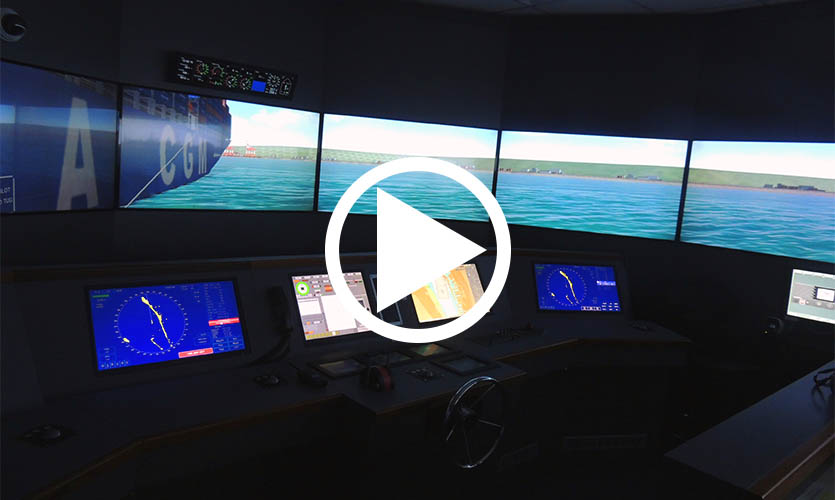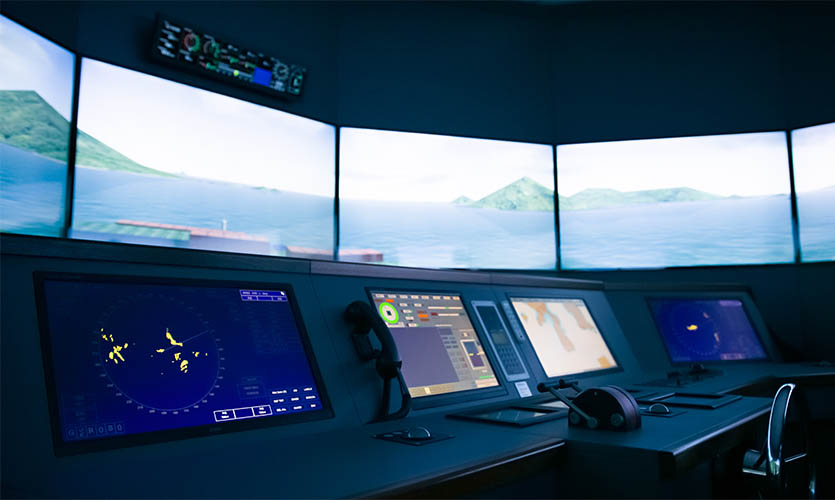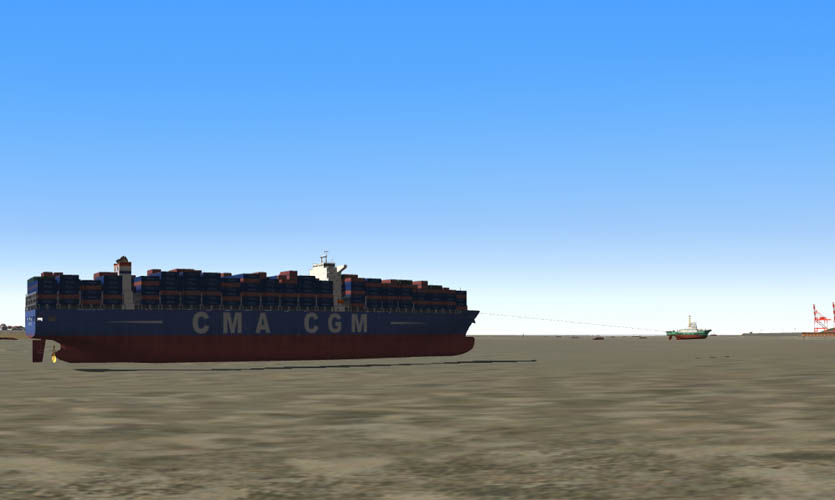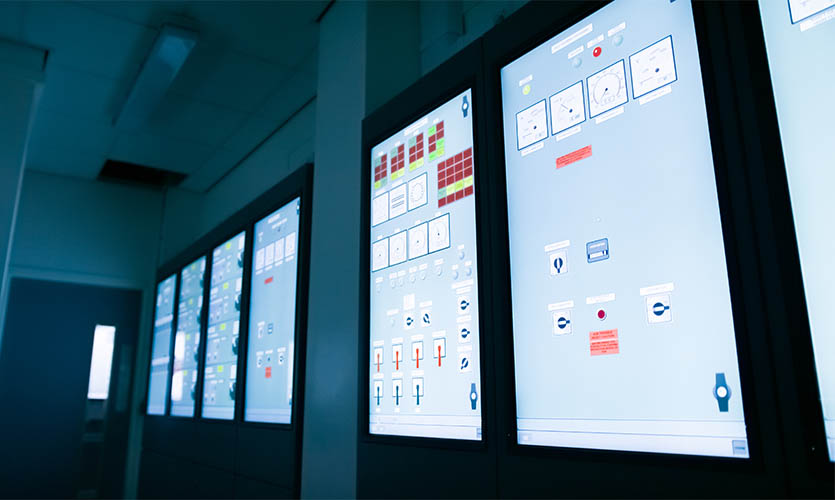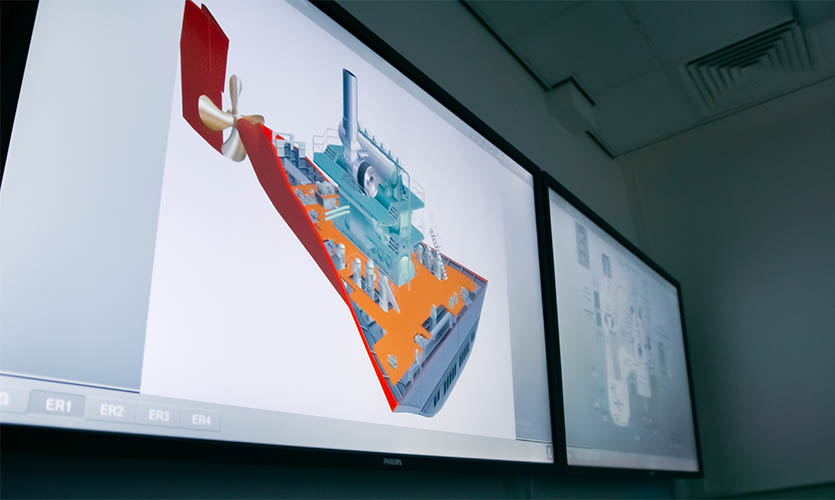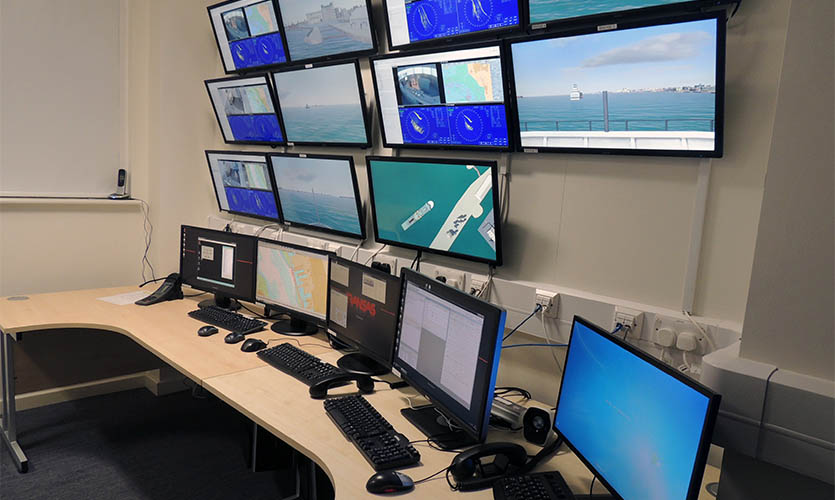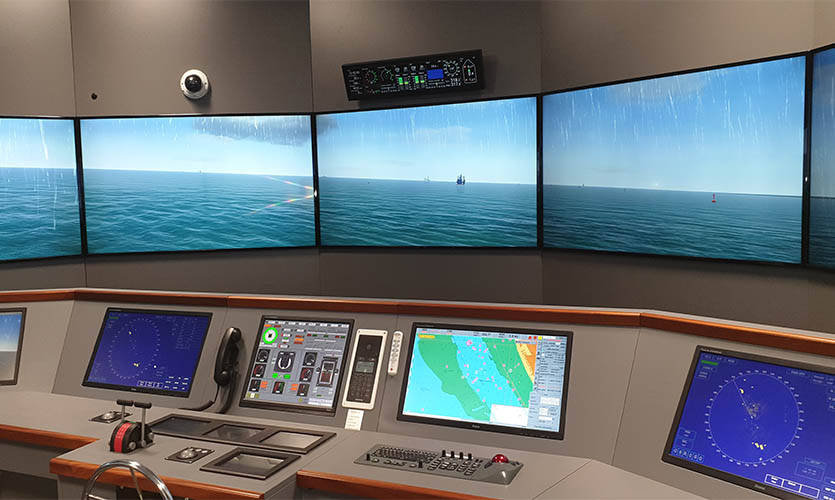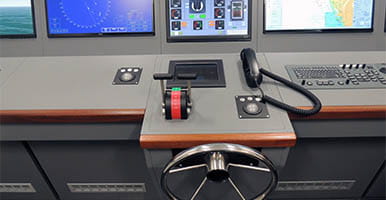Facilities at LJMU Maritime Centre
Our Maritime Centre in Liverpool is home to an array of cutting-edge training facilities, including ship-handling and tug simulators. Take a closer look at our facilities below.
Take a virtual tour of our facilities
Our facilities
Ship-handling simulator suite – Byrom Street
Supplied by Wartsila, this simulator consists of five bridges with the primary bridge configured to a 360° field-of-view. A full mission engine room simulator is located next to the bridges which can be used as a standalone simulator for training marine engineers in skills related to engine room watchkeeping. This facility has the capability to connect the bridges with the engine room – training both deck and engineer officers simultaneously.
ECDIS suite – Byrom Street
Our Transas ECDIS suite (Electronic Chart Display and Information Systems) is located in the James Parsons Building on Byrom Street and is fitted with 10 stations. Originally set up to meet the demands for ECDIS training, this facility provides a full mission desktop simulation solution for navigational training. Primarily used for junior watchkeeping officers and for ECDIS training, this facility is also used for the NAEST Operational course for merchant navy and yacht deck officers.
Engine room and LICOS suite – Byrom Street
These additional facilities are located in the James Parsons Building. They include LICOS (Liquid Cargo Operations Simulator) as well as a desktop-based engine room simulator set up in a multifunctional classroom.
About the bridge simulators
Our bridge simulator training facilities enable marine pilots, shipmasters and senior navigating officers to develop and practice their skills in a realistic but risk-free environment. These facilities are also used by junior officers to learn navigational skills prior to undertaking watchkeeping duties on board ships.
These state-of-the-art simulators allow us to place navigational officers in geographically-accurate virtual environments aboard one of the eight ship bridges, which respond and react just like one would expect at sea.
The main bridge’s 360° field-of-view allows mariners to practice approaching locks and berths, connecting tugs and bringing vessels of all types and sizes safely alongside, incorporating any number of mechanical failures and breakdowns.
Ship-handling software
Our simulators are readily configurable for existing models of ships available from our catalogue, or any new ship types, sizes or configurations designed and developed in-house using ship-modelling software. The software, which manages the simulation environment, includes comprehensive and fully configurable overlays. These allow for correctly positioned buoys, interactive tides, currents, geographically-variable wind, sea and swell. Changing conditions such as light, visibility, fog and rain, enhance the feeling of reality and fidelity. We have the capability to develop both the ship and port area models in-house. This provides us with the capability to conduct studies for modification of port infrastructure design of development of a new port from scratch.
Ship-handling hardware
The bridge panels and units can also be repositioned or replaced for specific ship type training. Hardware such as this provides a realistic simulation stage for training, research and role-play, all in a totally safe environment.
Secondary bridges
The four secondary bridges allow for interactive single and multiple-ship training scenarios to take place simultaneously, enhancing the experience for learners.
Each bridge comprises the latest electronic navigational aids such as Radar, ECDIS, GPS, Loran, AIS as well as a fully-functional Global Maritime Distress and Safety System (GMDSS) equipment fitted in each of the five bridges. When these aids are combined with GMDSS communications system the bridges become as realistic and modern as possible.
About the engine room simulator
Our Wartsila engine room simulator is located in the James Parsons Building. This facility can be used to train and assess the competence of engineer officers of all ranks. It can be used with several models of main and auxiliary propulsion machinery to provide training for equipment familiarisation, control systems, automation and safety, emission control, normal watchkeeping routines, fuel management as well as resource management in normal or emergency situations.
Multi-purpose classroom
Several PCs are utilised in this classroom to familiarise candidates with the engines and machinery they are likely to work with prior to being put in the full mission engine room simulator. This room is also used for lecturing as well as for debriefing upon completion of the simulation exercise.
Engine control room
This is the heart of the engine room operations’ simulation where touch screen controls are utilised to operate and manage the main as well as auxiliary machinery and systems. Additional realism is achieved by the use of real controls where required.
Engine room
The engine room itself is replicated on 3D touch screens that affords a sense of realism by allowing learners to virtually walk through the machinery spaces.
Emergency switchboard room
Touchscreen panels, real switchboards combined with circuit breakers provide a realistic mimicry of the ship’s engine room.
Instructor station
Multiple computers are used to load different models of the ship, ranging from superyachts to Very Large Crude Carriers (VLCCs). The instructor not only controls the exercises from this station but also communicates with learners when the simulator is being used in separation from the bridge simulators. This is where the instructor can introduce faults into the system to evaluate the learners’ ability to resolve the situation. When delivered for senior engineer officers, this type of scenario can be utilised to highlight significant requirements for the ‘engine room resource management’ as well.


